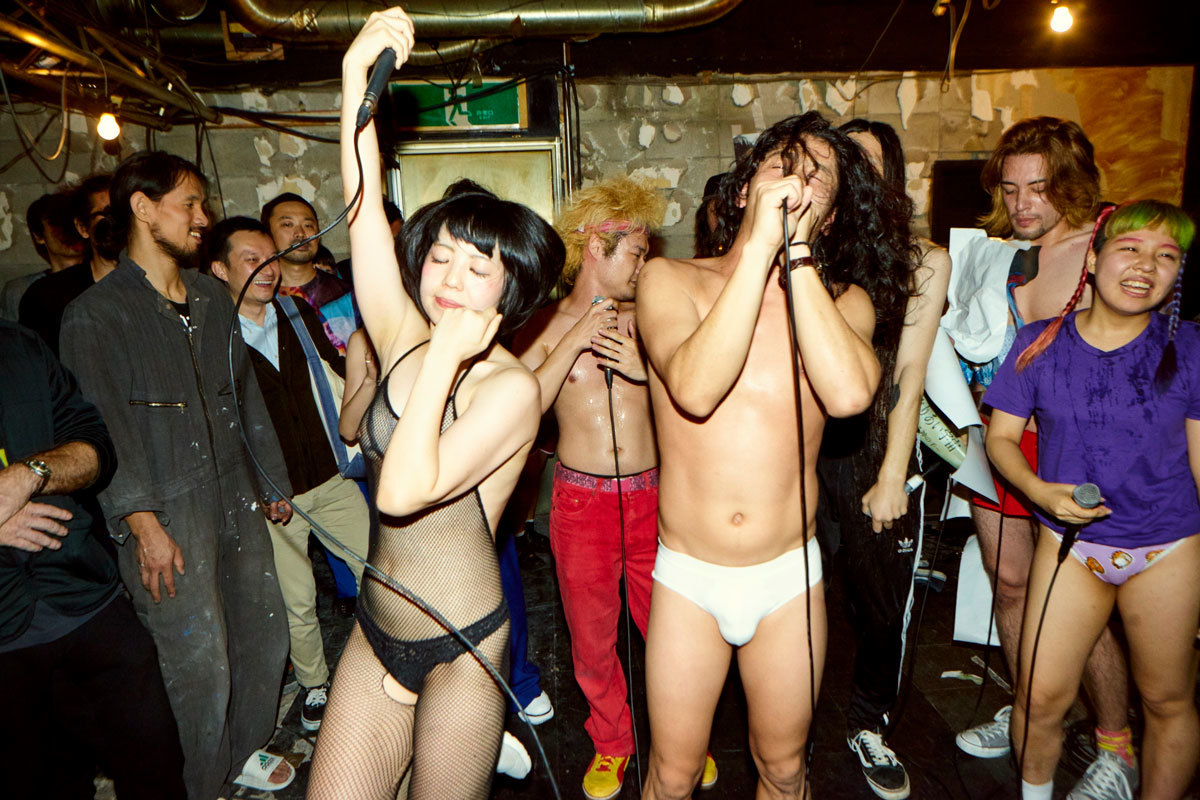Chim↑Pom is a daring collective of six young Tokyo artists known for their tongue-in-cheek neo-dadaist work, but the group might better be described as the Japanese art world’s biggest partiers. Famous for throwing alcohol-soaked all-nighters, Chim↑Pom’s events offer uninhibited respite from Japan’s strict social codes, and attract everyone from otaku misfits, lofty fashion heads, and stuffy art critics. It’s an all-embracing, inclusive underground art world that Chim↑Pom inhabits — and a window into an arena where, for once in Japan, anything goes.
For the group’s most recent exhibition, So See You Again Tomorrow, Too?, the collective presented a new body of work in a gutted building in Shinjuku’s red light district, and took the opportunity to throw a couple of its notorious parties, inviting a special profusion of alternative artists, musicians, and DJs to perform in the derelict space. “A lot of the performers are our close friends, and they all have a personal connection to us,” explains Chim↑Pom’s Ellie. All of them are plucked from a bubbling hotbed of Japanese subculture.
Being ‘underground’ perhaps means something different in Tokyo: independent artists are not chided for selling out to bigger corporations, and there is less of the suffocating, esoteric pretension often found in cultural pockets that sit decidedly outside of the mainstream. “I find a lot of artists, even within the underground, have to change their image to make it work for the mainstream. It’s not a good or bad thing, it’s just what people do here,” Ellie states. “Of course everyone wants to be in the underground and do experimental stuff, but the mainstream is essential to make a living.” Still, it’s fair to say that the most fun happens when nobody has to please those holding the purse strings: “All of the performers participated with basically no performance fee. It’s a special relationship,” Ellie says. Below are some examples of that relationship, and a rare insight into true alternative Tokyo.
Nature Danger Gang
A gang of 14 with a loyal cult following all over Tokyo’s wards and districts, Nature Danger Gang is a punk-spirited band whose energetic performances are sweaty, gung-ho affairs. Swinging from the shaky steel rafters of the exhibition’s packed basement and smashing through the ecstatic crowd chanting “what does it mean to be alive?” in Japanese, the band made it feel as though the building might cave in — but nobody seemed to care. Dressed in a mix of nerdy thrift store clothes, school uniforms, and often stripping down to nothing at all, Nature Danger Gang somehow manage to marry all-out insanity with Japanese dignity. After an obscene show of violent, naked moshing, mic-in-throat screaming, and snotting on the floor, the band ended its performance with a deep collective bow, shouting a typically sincere thanks of “arigatou gozaimashita!“
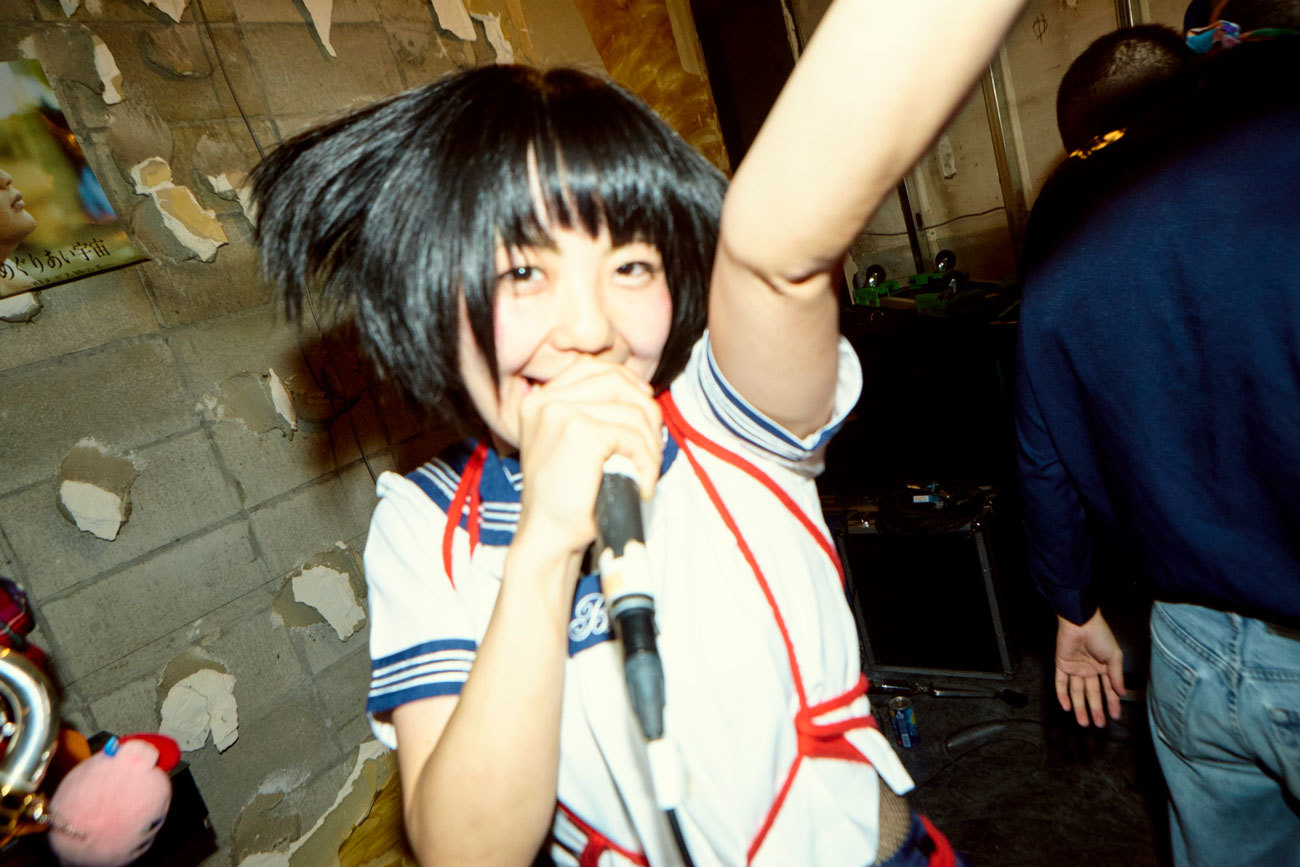

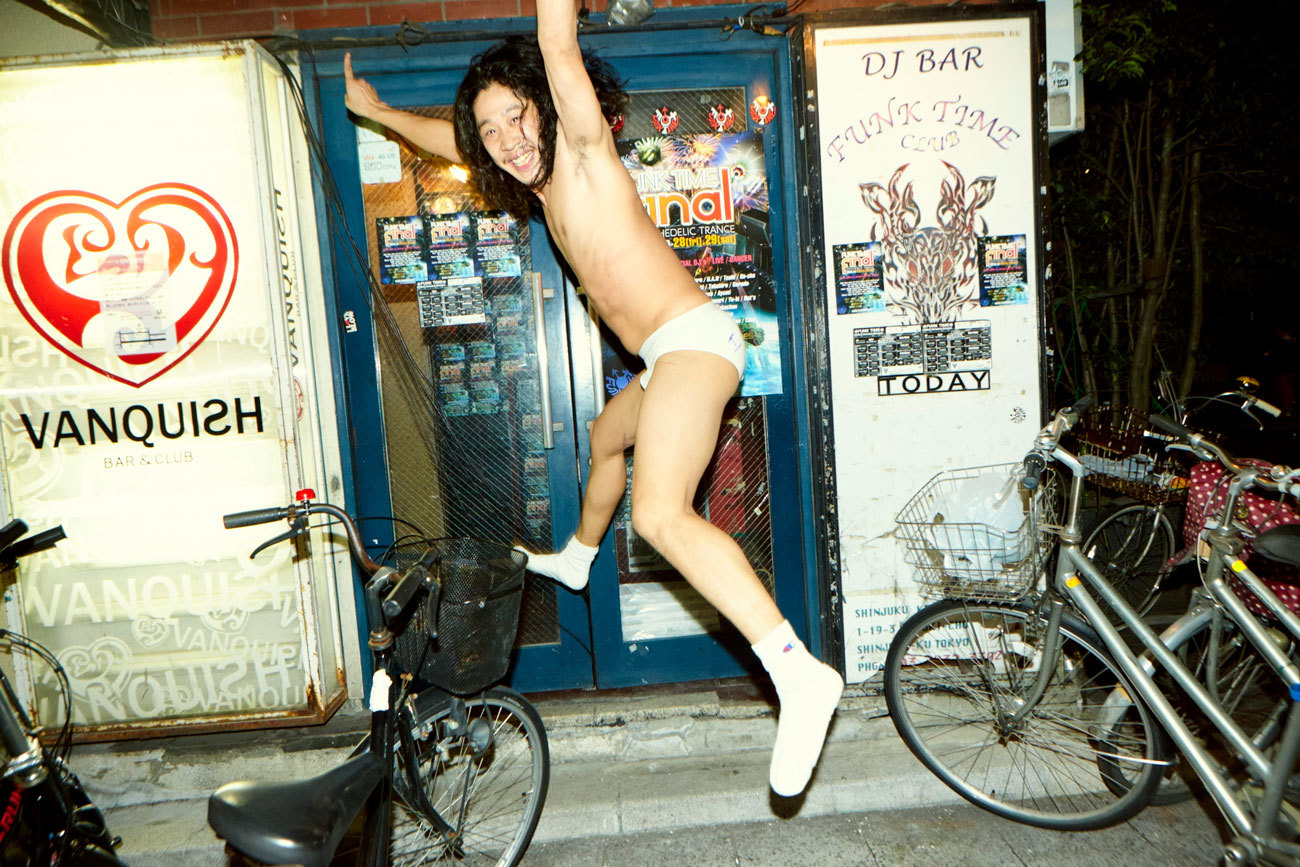
KOM_I
With a quirkily infectious smile and a carefree genki attitude, KOM_I (pronounced komai) is part of the Japanese electronica group Wednesday Campanella. Despite her two bandmates, she always performs solo, and has a growing following among Tokyo’s youth. In many ways, KOM_I is the underground equivalent of a Japanese idol, and appears with unsurprising frequency in a multitude of Japanese fashion and culture mags. At Chim↑Pom’s show, she stumbled excitedly across the five floors of the exhibition space, dancing and singing teeny-bopper beats into an old portable microphone/boombox that kept cutting out, but couldn’t quell her enthusiasm. She disappeared momentarily, before emerging outside dressed in a Pikachu onesie, climbing into a gigantic inflatable pokéball and zorbing around Kabukicho’s streets while singing, much to the chagrin of a few immobilized taxi drivers.
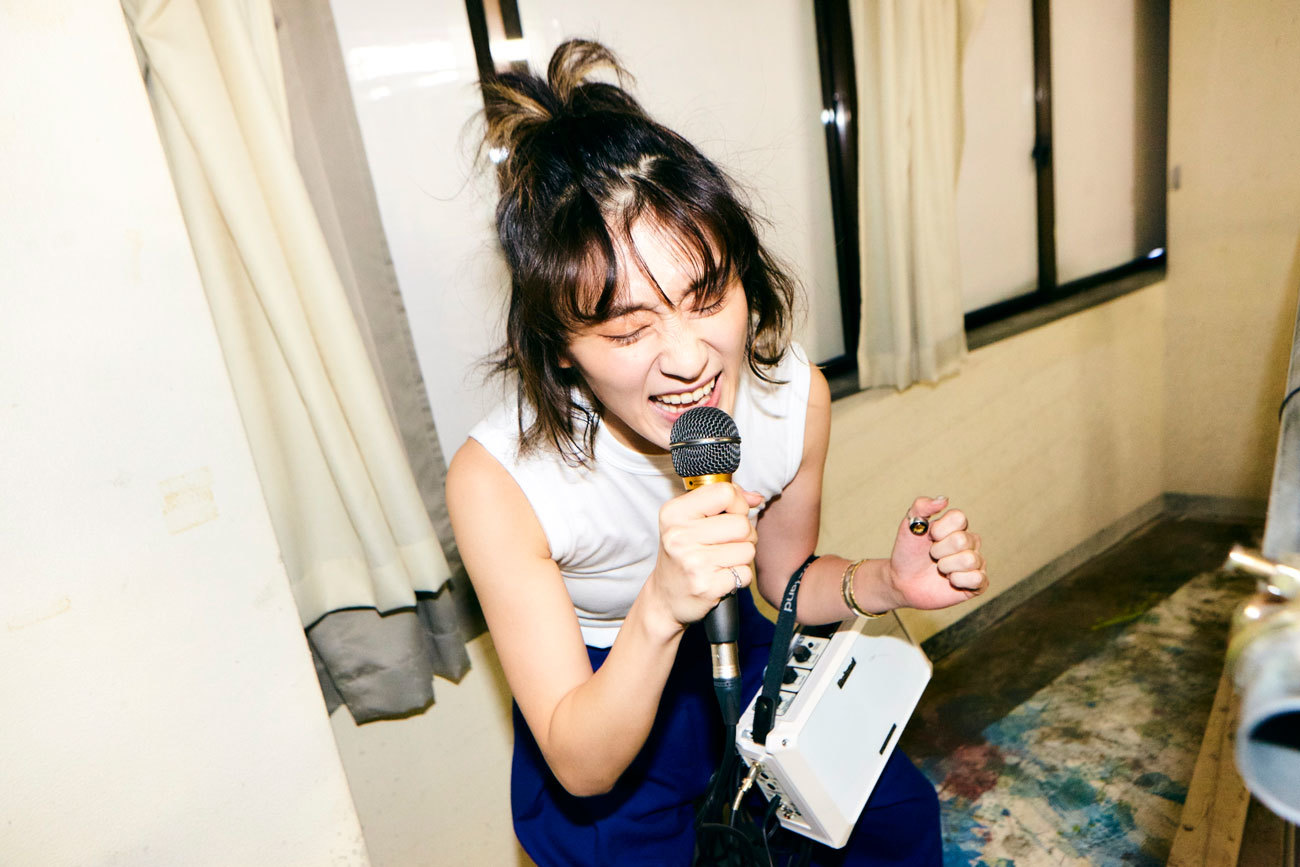
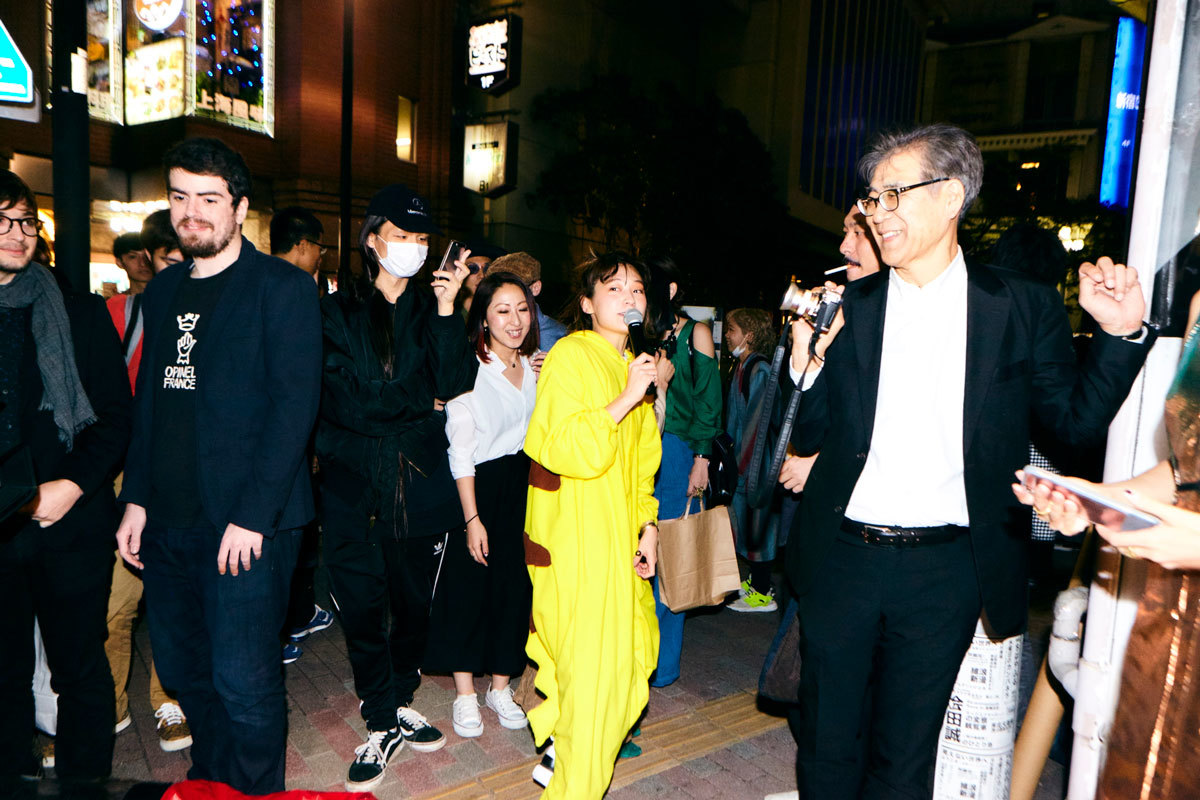

Kan a.k.a. Gami
In the early hours of a Sunday morning, scores of dedicated fans lined up in the red light district for over an hour to witness hip-hop heavyweight Kan a.k.a. Gami perform in the grimy basement of Chim↑Pom’s exhibition space. Known as the king of freestyle rap in Tokyo, the name Kan comes from a sanskrit reading of the ‘rooster’ zodiac sign. Gami is his childhood nickname. A chief figure in Tokyo’s homegrown hip-hop scene (think of him as the Japanese Skepta), Kan owns his own record label, and is known for rapping about underground culture in Shinjuku, his favorite area in Tokyo because, he says, “you can live your life here; everybody does their own thing and nobody meddles in your business.” Kan needn’t worry, he isn’t the kind of man you’d consider meddling with anyway.

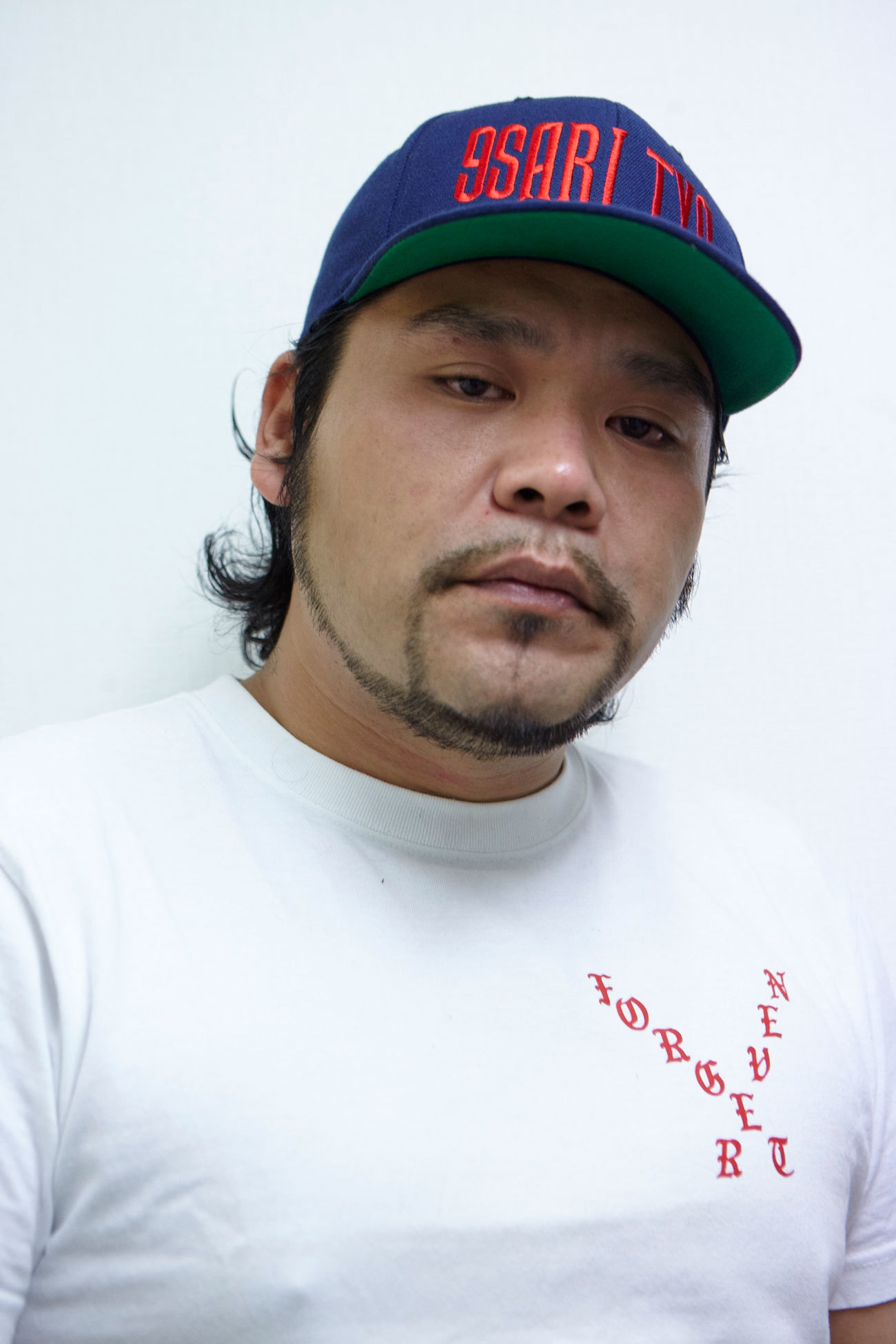
Makoto Aida
Labelling Makoto Aida as ‘underground’, at least in a Japanese context, is perhaps a little off: although he is little-known outside of his home country, Aida is one of the most prolific artists alive in Tokyo today. Parallels are often drawn with his contemporary Takashi Murakami, yet Murakami’s kawaii kitsch aesthetic launched him into popularity in the West, whereas Aida remains a domestic talent, and arguably one of the Japanese art world’s best kept secrets. Aida’s work is vast, highly controversial, and erotically grotesque: he once filmed himself masturbating to a wall covered in the Japanese kanji characters for bishojo (beautiful girl), and has painted anime-esque female characters copulating with insects, and in various stages of amputation. Accusations of misogyny have been levied at the defiant Aida, but his work is an unfettered expression of the social phenomena of Japanese eroticism rather than an endorsement of it.
Chim↑Pom’s members orbited around Aida’s studio in their early years (he is credited with bringing the collective together) and they share a mutual respect: “Their art is refreshing and ridiculous,” he said of their latest exhibition. “It’s something you can laugh at.” He turned up looking characteristically unkempt to play a short DJ set comprised mostly of cheesy songs by vintage J-pop artist Miyuki Nakajima. After emerging from the basement, he spent the rest of the evening sat cross-legged on the curb outside, departing senpai wisdom to a crew of young arty types whilst enjoying a few cans of Asahi from the local 7Eleven.
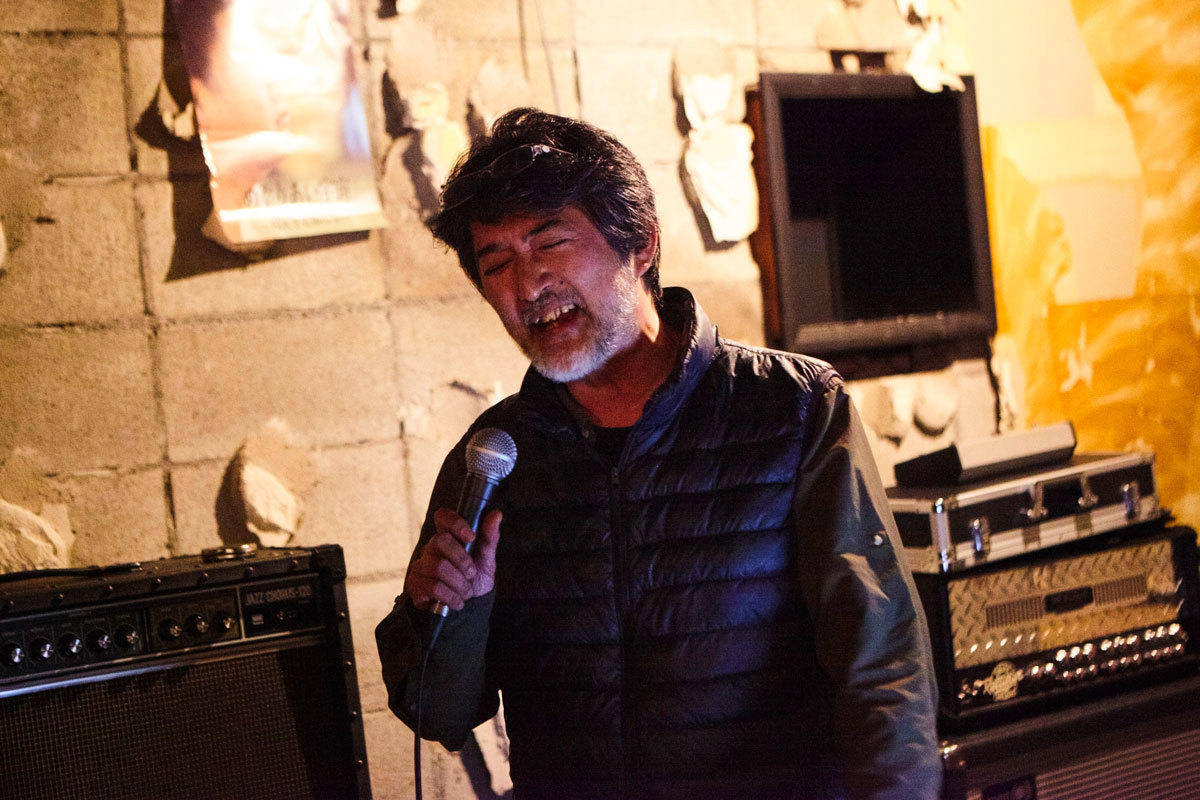

Ellie
It would be an oversight to write about Chim↑Pom’s world without giving Ellie — the group’s only female member — due attention. With her sharp blonde bob and It girl-worthy style, she is the photogenic face of the controversial unit, its beating rebel heart, and its queen. A former model for Aida’s paintings, Ellie is an enigma the artist label doesn’t quite fit — she’s closer to a rockstar. Turning up to our interview in pajama bottoms and a faux-fur coat, she once blew up her collection of Louis Vuitton handbags on Cambodian landmines, and staged her wedding ceremony as a hungover morning march across Shibuya for an art piece faux-pertinently named LOVE IS OVER. On the last night of So See You Again Tomorrow, Too?, Ellie was escorted out of the final performance for getting too wasted, before being chairlifted by the rest of the collective to give a drunken closing speech, her gravelly voice yelling happily into the early morning light to roaring, and deserved, applause.


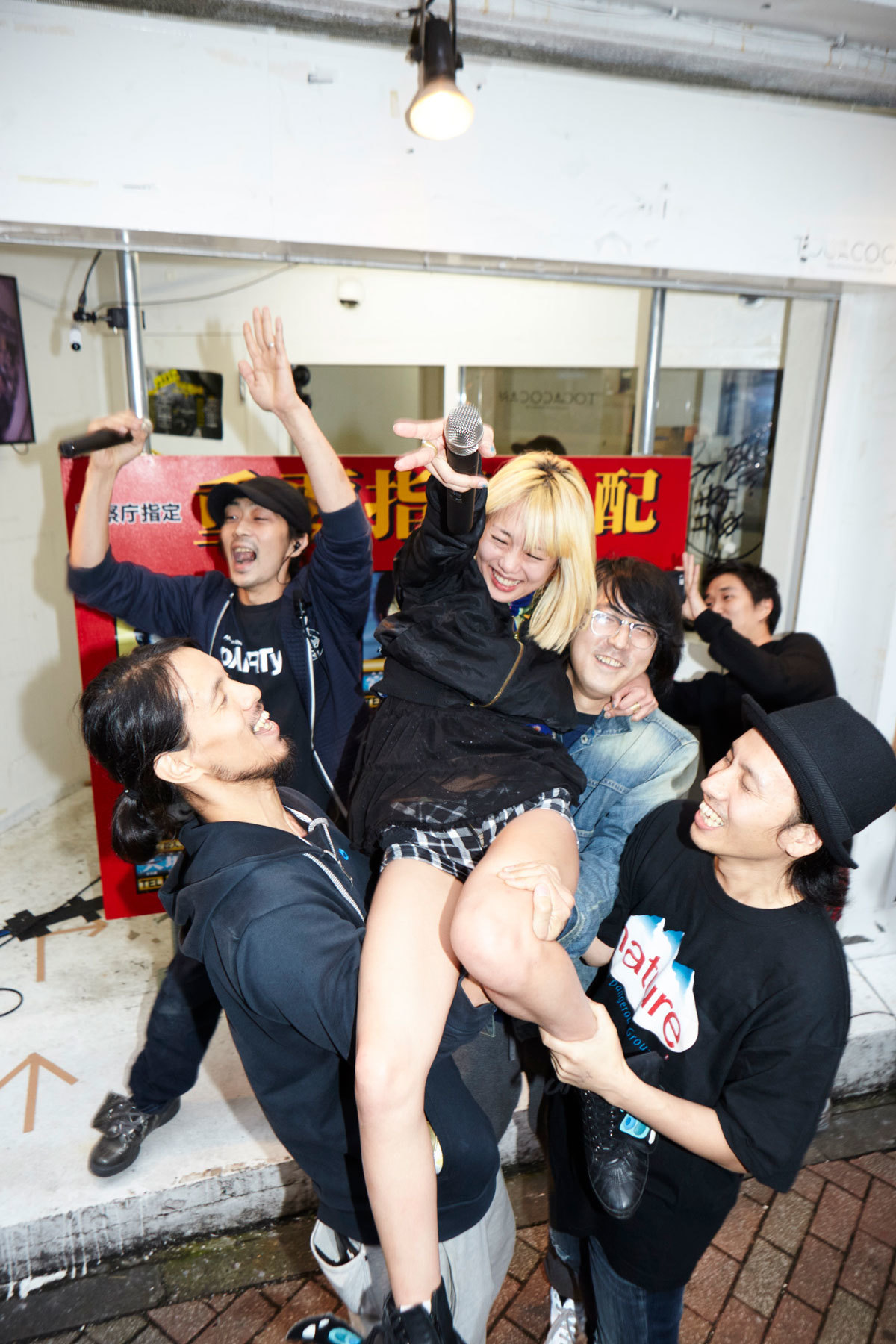
Credits
Text Ashley Clarke
Photography Takao Iwasawa
